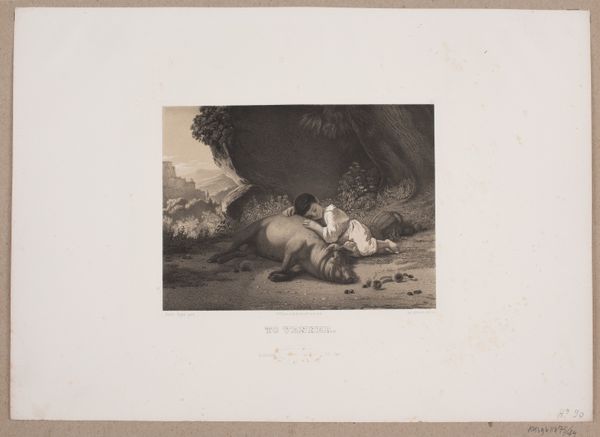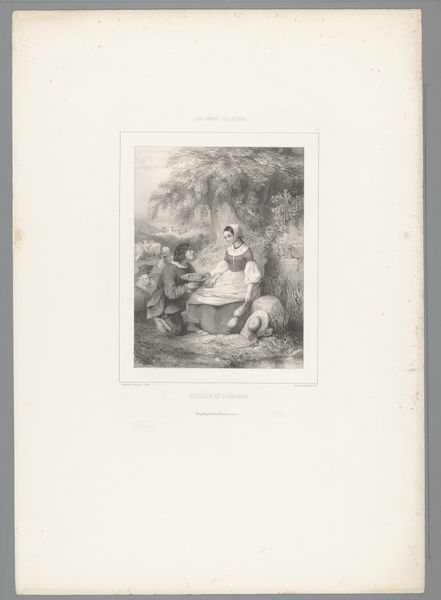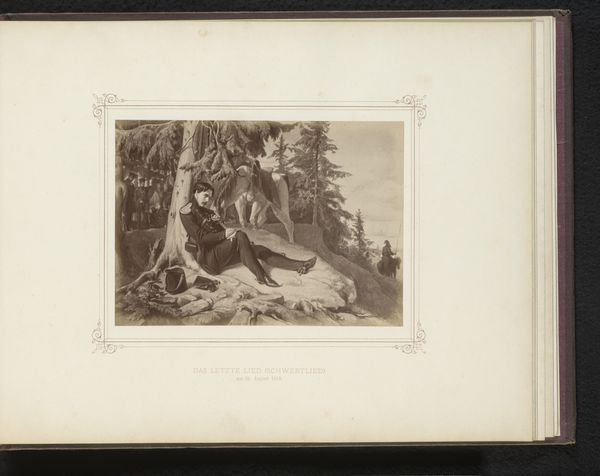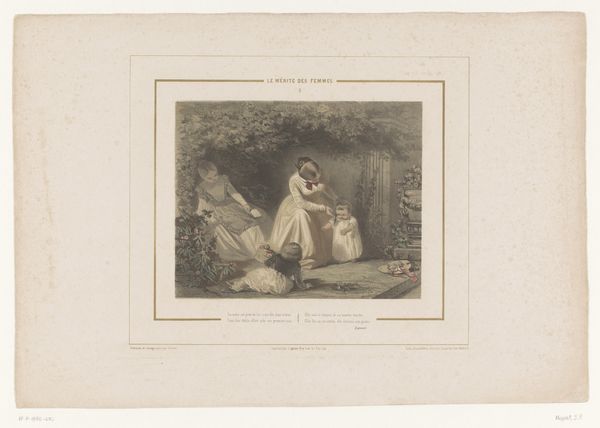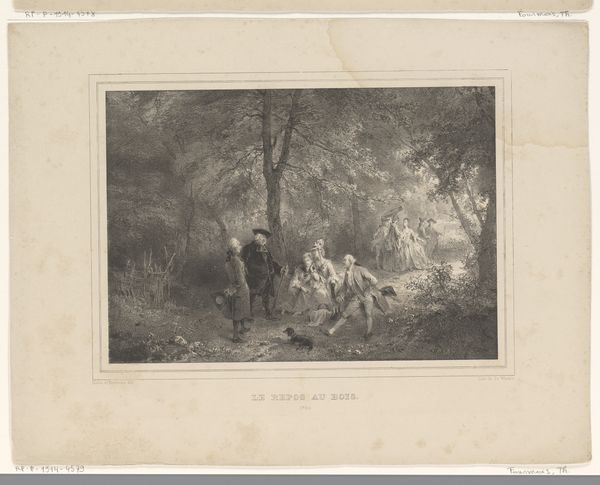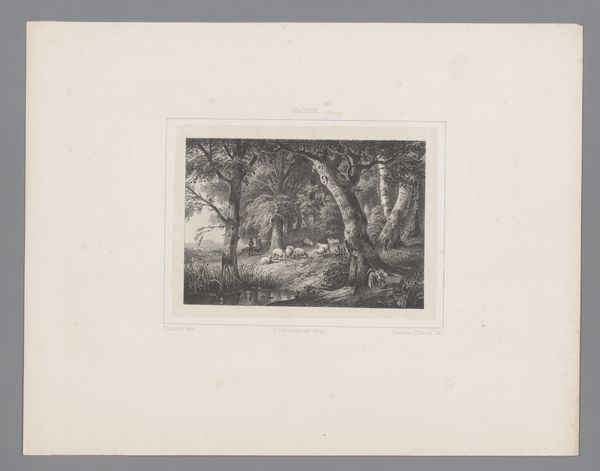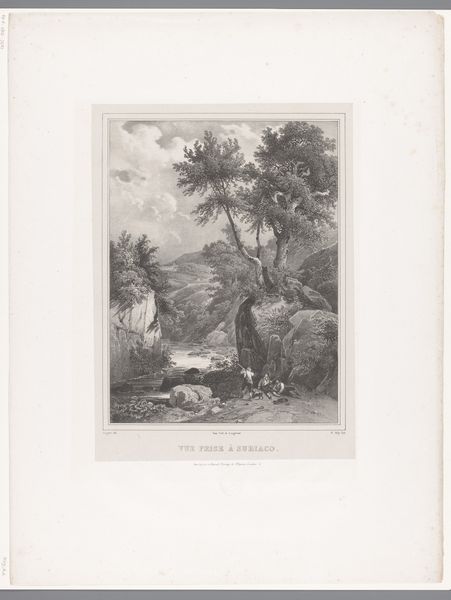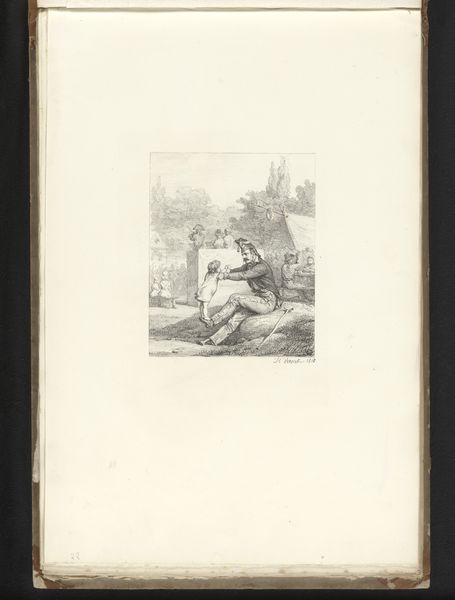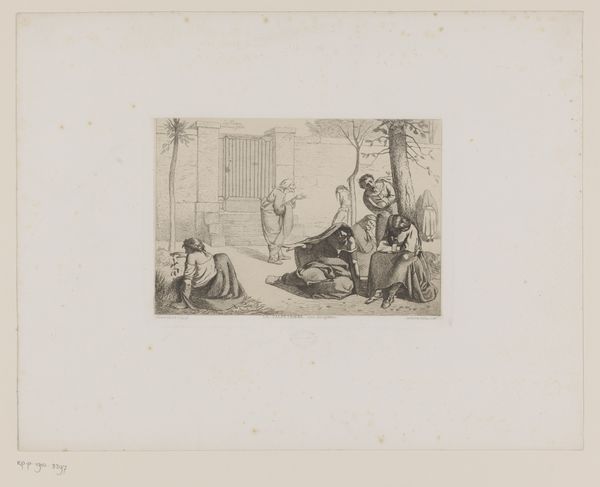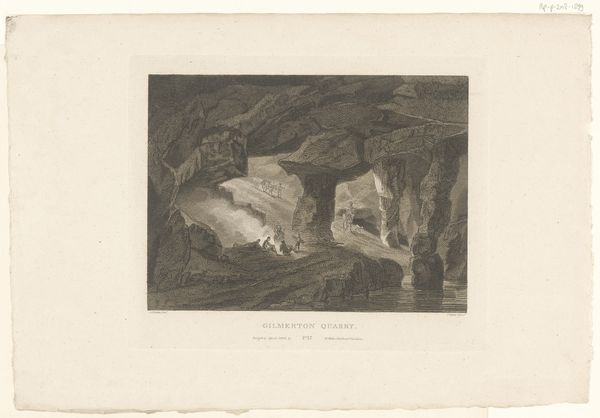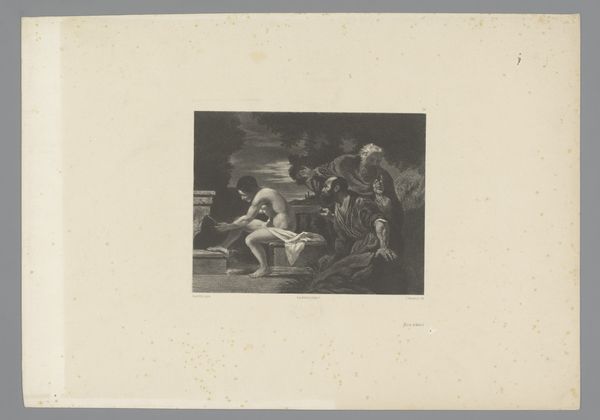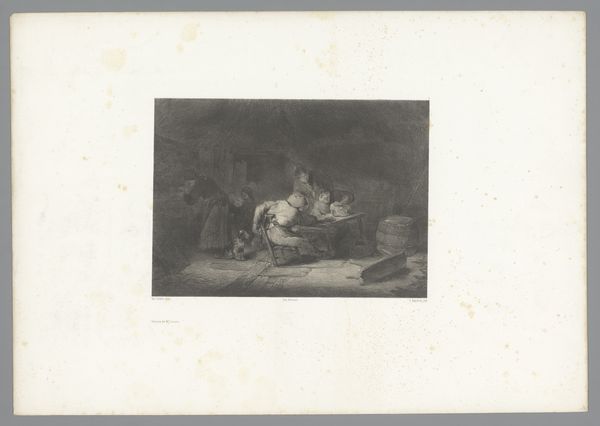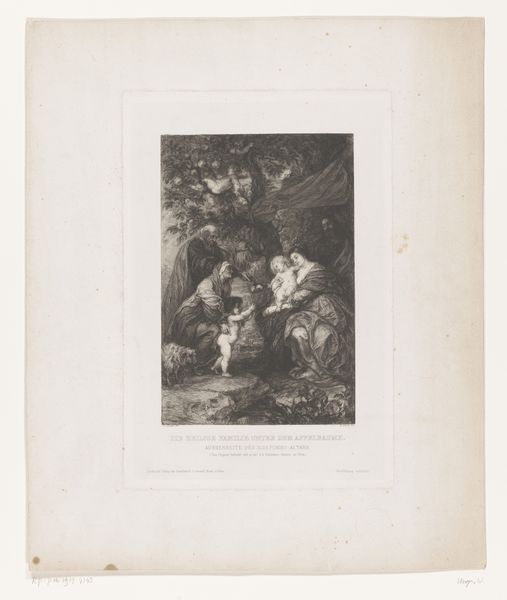
Fotoreproductie van een tekening, voorstellende Cupido met een leeuwin before 1859
0:00
0:00
print, etching
#
allegory
#
animal
# print
#
etching
#
landscape
#
classical-realism
#
figuration
#
nude
Dimensions: height 139 mm, width 215 mm
Copyright: Rijks Museum: Open Domain
Editor: Here we have a reproduction of a drawing by Franz Mattig, predating 1859, titled *Fotoreproductie van een tekening, voorstellende Cupido met een leeuwin*, which translates to "Photographic reproduction of a drawing, representing Cupid with a lioness". The use of etching and print gives the image an antique feel. The tonal range of the grey shades creates a somewhat somber mood despite the cherubic subject matter. What strikes you about this print? Curator: I'm immediately drawn to the juxtaposition of the figures. Note how Mattig contrasts the soft, rounded form of Cupid with the more angular and powerful physique of the lioness. Observe the compositional tension created by placing these figures so close together, yet separated by their inherent natures. Editor: I see what you mean. There's a real sense of opposition and balance. But I wonder, how does the landscape contribute to this relationship? Curator: Precisely. The classical-realist landscape serves as a stage. Note how the trees frame the interaction, drawing our eyes to the two figures. The subtle tonal variations in the background create depth and enhance the dimensionality of the foreground elements. The carefully arranged composition compels viewers to reconcile the paradoxical figures in order to come to a better understanding. Do you also see a slightly diagonal organisation of elements on the two sides of the scene? Editor: I do now. I initially found it hard to pin down, but now I see how everything fits together into that subtle diagonal across the centre. So, would you say the power of this work lies in its formal arrangement? Curator: Indeed. It's the interplay of form and composition that generates the print's effect, encouraging reflection on contrasting elements unified into a single composition. It is only through sustained visual investigation of each individual aspect of the print and their mutual dependencies that we begin to approach its truth. Editor: That’s a great insight. Thank you. It’s really made me appreciate the image in a new light. Curator: My pleasure. Close visual analysis is the surest path to better understanding any piece of art.
Comments
No comments
Be the first to comment and join the conversation on the ultimate creative platform.
